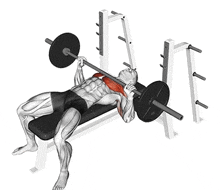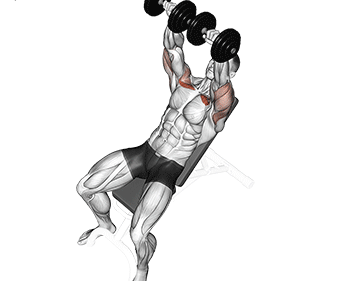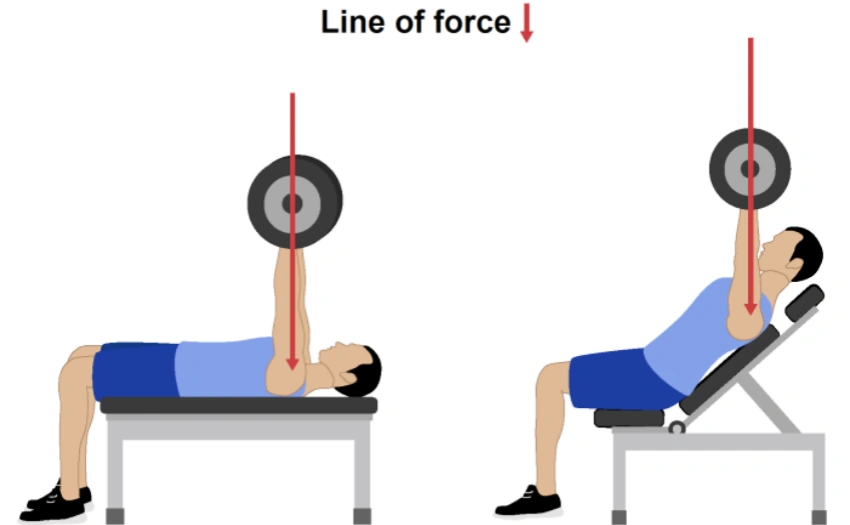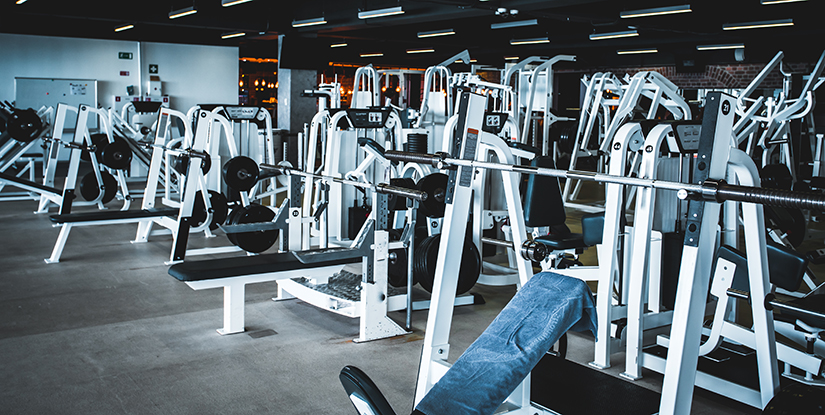Incline bench vs flat bench — yeah, that question again. If you’ve ever hit chest day, you’ve thought about it. They kinda look the same. But trust me, once you try both? Totally different.
Flat bench is the usual pick. Feels solid. Hits the middle of your chest. Most people start there. Incline? Bit weird at first. More shoulder. Burns the upper chest more. And for some reason — just feels heavier.
So here’s the simple version: flat is more balanced, incline is more specific.
Which one’s “better”? Depends. What are you even trying to build?
What is Flat Bench Press?
Flat bench vs incline— flat bench press is the version where you lie flat and press the bar straight off your chest.
It’s the most common chest press you’ll see in any gym. Simple setup, strong movement, and it hits the middle of your chest better than anything else.

What Muscles Does It Work?
- Main target: middle chest — the thick part across your pecs
- Also works: triceps and front delts
How Do You Do It?
- Lie flat on the bench, feet planted
- Grip the bar a little wider than shoulder-width
- Lower it slowly to around your nipple line
- Press it straight up — controlled, not bounced
- Keep elbows at about 45°, not flared out
- Small arch in your back is fine, just don’t overdo it
What Are the Benefits?
- You can usually push heavier weight here than on incline
- Builds overall chest mass and upper body strength
- Great for beginners and pros — it scales well
- Easy to learn, no fancy setup
- Works in any push day or chest routine
What is Incline Bench Press?
Incline bench press vs flat — here’s the deal: incline has you leaning back, not lying flat.
You’re angled up, usually around 30 to 45 degrees. It doesn’t sound like much, but that small tilt changes everything — how it feels, what muscles fire, even how strong you feel.

🟢 Which Muscles Does It Hit?
- Main target: upper chest — the top shelf of your pecs
- Also works: shoulders (especially front delts) and triceps
If your upper chest is flat or lagging, incline should be your go-to.
🟢 How to Do It Right?
- Set the bench at a slight incline — 30 to 45 degrees works best
- Sit back, feet flat on the ground
- Grip the bar slightly wider than shoulder-width
- Lower the bar to your upper chest or collarbone area
- Press up in a straight line — don’t drift forward
- Keep your back tight and head against the bench
The angle changes everything — less power, more control.
🟢 Why It’s Worth Doing?
- Focuses on upper chest, which is hard to grow with flat alone
- Improves overall chest shape and balance
- Helps reduce shoulder strain compared to overhead presses
- Builds strength in a new angle — good for breaking plateaus
- Adds variety to your push day
Incline bench brings out that upper chest shelf. It fills in the part your T-shirt actually shows.
Incline Bench vs Flat Bench: Key Differences

So now you know what each one does — but how do they really compare?
Let’s just line them up and see where they’re different:
| What’s Different? | Flat Bench | Incline Bench |
|---|---|---|
| Bench Angle | 0° (flat) | 30–45° (slight incline) |
| Main Muscle Worked | Middle chest | Upper chest |
| Also Works | Triceps, front shoulders | Shoulders, triceps |
| Weight You Can Lift | Usually heavier | Usually lighter |
| Feels Like | Strong, stable, more power | Harder, burns more, focused tension |
| Shoulder Involvement | Moderate | Higher (more front delts) |
| Good For | Overall size and strength | Chest shape and upper chest development |
| Best Use Case | General chest workouts, beginners | Targeted work, aesthetics, fixing weak spots |
💡 Simple Takeaway
- Flat bench gives you more strength and size.
Incline bench gives you shape and upper chest detail.
Do both if you want a complete chest — they don’t replace each other.
You Use Both in One Workout?
Short answer? Yes. And honestly — you probably should.
Flat and incline bench don’t cancel each other out. They hit different parts of your chest. If you want size and shape, using both is one of the smartest things you can do.
✅ Why It Works
- Flat bench builds strength and full chest mass
- Incline bench targets the upper chest and improves shape
- Combining them gives you better overall development
- Switching angles also keeps your body guessing (which means more growth)
They’re both useful. Different feel, different effect. Honestly, it makes sense to use both.

✅ How to Use Both Together
You can:
- Do both in the same workout
Example: Start with flat bench (heavier), then move to incline (more focused) - Alternate them across the week
One day flat, one day incline - Use one as your main lift, the other as accessory
Example: Flat barbell bench, then incline dumbbell press
✅ Sample Chest Day (Push Workout)
| Exercise | Sets x Reps |
|---|---|
| Flat Barbell Bench Press | 4 x 6–8 |
| Incline Dumbbell Press | 3 x 8–10 |
| Cable Chest Fly | 3 x 12–15 |
| Triceps Dips or Pushdowns | 3 x 10–12 |
Quick Tip
Don’t overthink it. You don’t have to do both every time — but if you want full chest development, don’t ignore either one.
Common Mistakes and How to Fix Them
Both flat and incline bench can give great results — but only if you’re doing them right.
Here’s a quick list of the most common mistakes people make, and how to fix them fast.
| Mistake | What Happens | How to Fix It |
|---|---|---|
| Elbows flared too wide | Hurts your shoulders, weak power | Tuck elbows in around 45°, not out like wings |
| Incline angle too high | Turns into a shoulder press, not chest | Keep the angle around 30–45°, not more |
| Bouncing the bar off your chest | No control, risk of injury | Lower slowly, light touch, then press |
| Going too heavy, bad form | Half reps, shaky lifts, possible strain | Use weight you can move with good form, full range |
| Only doing one bench variation | Uneven chest growth (flat middle, weak top) | Mix both flat and incline into your routine |
Incline vs flat bench? Not a fight — it’s a combo.
Flat bench gives you raw strength and size. Incline shapes your upper chest and brings balance. You’re not choosing a side — you’re building a full chest from top to bottom.
So don’t just repeat what’s easy. Train both. Push hard. Fix your form. And give your chest a reason to grow.

Hi, I’m Alex Carter, part of the editorial team at Leadman Fitness. We specialize in crafting premium custom racks, cable machines, functional trainers, and strength accessories for home and commercial gyms. With a background in competitive powerlifting and gym design consulting, I’ve spent years testing gear under heavy loads and optimizing layouts for efficiency.
I focus on translating real-world user frustrations—like space limitations, budget constraints, or durability needs—into actionable solutions. By collaborating directly with our engineers and facility owners, I ensure our custom equipment evolves to solve the unspoken challenges lifters face daily. What I share isn’t textbook advice; it’s battle-tested insight from racks I’ve welded, cables I’ve replaced, and gym floors I’ve trained on.
